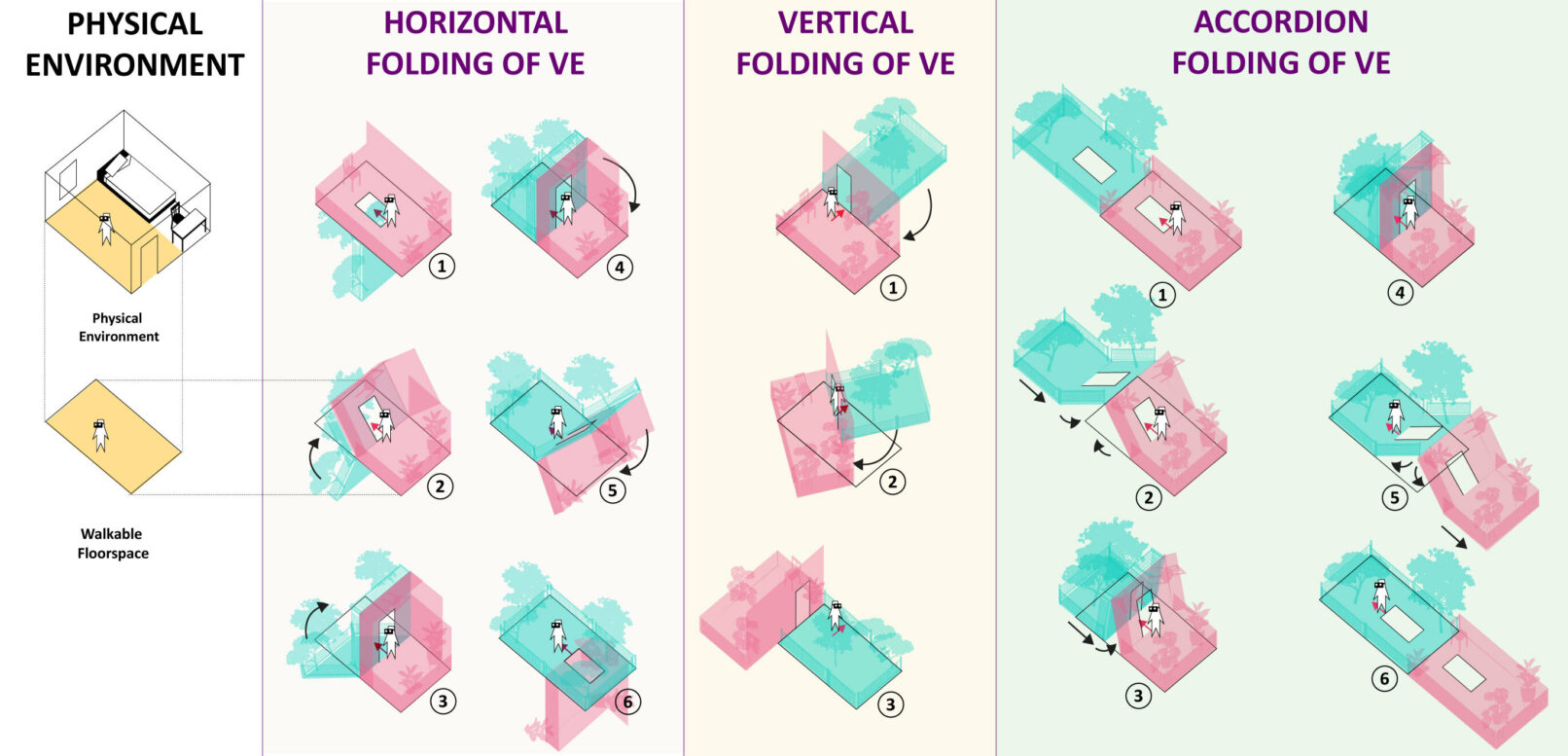‘Folding’ a Virtual Reality Environment to Enable Natural Walking in Physical Reality
How can users walk naturally inside a limited physical space to explore a larger VR environment?
In real life, walking is an intuitive and ‘natural’ mode of travel. In Virtual Reality (VR) however, walking is a restrictive and challenging form of locomotion. In other words, it is challenging to walk naturally through a VR environment within the confines of a room. We thus developed a novel approach to enable natural walking in virtual environments that are larger than the physical space available. Although more ‘supernatural’ methods of VR locomotion exist like teleportation, natural walking shows benefits in higher presence, spatial understanding, and cognitive engagement.
To tackle the challenge of enabling natural locomotion, VR researchers have already proposed several techniques for ‘redirection’, namely the manipulation of a virtual reality user’s trajectory to stay within the confines of their physical space when walking through a much larger virtual space. Most research focused on ‘subtle’ techniques that attempt to remain unnoticed by users, such as by creating the illusion of walking in a straight line while the user is in reality walking in circles. Other ‘overt’ redirection focus on introducing changes that may be supernatural but are nevertheless immersive.
We propose Foldable Spaces, an overt redirection approach based on the idea of dynamically ‘folding’ the geometry of the virtual environment to reveal new locations depending on the trajectory of the virtual reality user. We developed three distinct techniques for overt redirection: (1) Horizontal, which folds and reveals layers of virtual space like the pages in a book; (2) Vertical, which rotates virtual space towards the user along a vertical axis; and (3) Accordion, which corrugates and flattens virtual space to bring faraway places closer to the user.
In a within-subjects user study, we compared our proposed foldable techniques against each other along with a similarly situated redirection technique, Stop & Reset. Our findings show that Accordion was the most well-received by participants in terms of providing a smooth, continuous, and ‘natural’ experience of walking that provides seamless shifts in orientation and an overarching view through the virtual environment.
Publication
J. Han, A. Vande. Moere and A. L. Simeone, “Foldable Spaces: An Overt Redirection Approach for Natural Walking in Virtual Reality,” 2022 IEEE Conference on Virtual Reality and 3D User Interfaces (VR), 2022, pp. 167-175.





